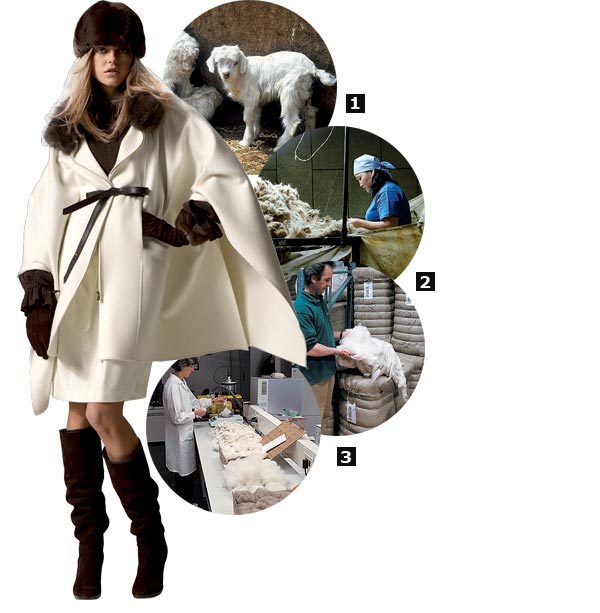 |
Deep in the mountains of Mongolia, a team of skilled shepherds delicately combs the wool of 45 kid goats. Nine to 12 months later, a luxurious Loro Piana cashmere cape appears in a display window on Oak Street. How were these raw goods transformed into high fashion? This is the story.
1. Mongolia
A de-hairing facility checks the fibers to make sure that no hair is too coarse.
2. Quarona Mill, Italy
A warping mill transforms the yarn into fabric. Fabrics are later "finished." "This is the ‘secret recipe’ every company uses to create distinctive fabrics," says company CEO Pier Luigi Loro Piana. The finished fabric then moves on to fine mending. A mender marks any flaws.
3. Rocca pietra Mill, Italy
Toothed rollers gently comb the fibers without breaking them, creating the correct ratio of fiber and air, or "mattress." The mattress is then separated into bundles of fiber and "spun"—a combined action of torsion and traction that turns the fiber into a thread.
4. Next, electron microscopes (magnifying up to 34,000X) measure the thickness of the individual strands of fiber, making sure each strand is no more than 500 nanomicrons in height. About 450 readings are taken for every batch.
5. 45 East Oak Street, Chicago
After clearing customs at Port Brokers in Jamaica, New York, the cape arrives in Chicago. Yours for $18, 125.


